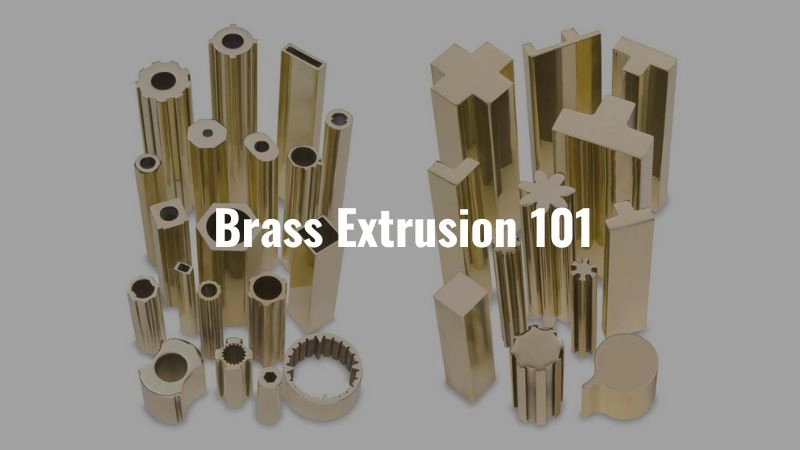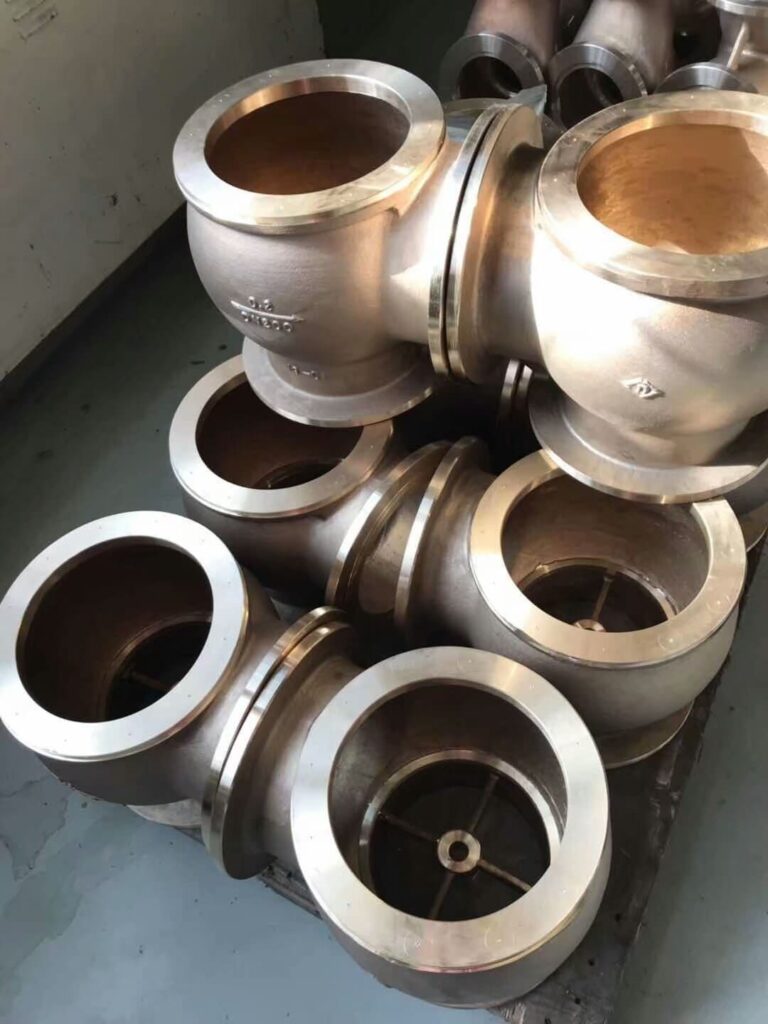Discover the brass extrusion process, benefits, and custom precision profiles for architectural, automotive, and industrial applications with VastPCC.
What Is Brass Extrusion A Step-by-Step Breakdown
Wondering what brass extrusion really means and why it matters? Simply put, brass extrusion is a manufacturing process where brass alloy is pushed or drawn through a shaped opening to create continuous profiles like rods, tubes, or custom shapes. Think of it like squeezing toothpaste out of a tube, but with metal instead.
The Fundamentals of Brass Alloys and Why They’re Ideal for Extrusion
Brass is a mix of copper and zinc, sometimes with small amounts of other metals. This combination gives brass its strength, corrosion resistance, and excellent machinability. These qualities make brass alloys perfect for extrusion because they shape easily under heat and pressure without cracking or losing integrity. That’s why you’ll often see corrosion-resistant brass rods and machinable brass shapes made through extrusion.
The Brass Extrusion Process From Billet to Finished Profile
It all starts with a brass billet – a solid, cylindrical block of brass alloy. This billet is heated just enough to soften but not melt the metal. Next, the billet is forced through a custom metal die—the shaped opening—which forms the brass into the desired profile, like extruded brass bars or precision brass tubes. After extrusion, the profiles cool and may undergo finishing treatments like straightening or surface polishing.
This step-by-step method allows for consistent, precise shapes that meet tight tolerances, making brass extrusion a go-to for industries needing reliable and customizable metal components.
Curious about how brass extrusion stacks up against other metal shaping methods? Let’s explore that next.
Key Benefits and Limitations of Brass Extrusion
Advantages That Outshine Casting and Forging
Brass extrusion offers several benefits that make it a go-to choice over casting and forging, especially here in the U.S.:
- Consistent Quality: Extrusion produces uniform brass alloy profiles with smoother surfaces, reducing the need for extra machining.
- Better Strength-to-Weight Ratio: Compared to casting, extruded brass bars and rods often deliver improved mechanical properties and durability.
- Precision Shapes: You get complex, custom machinable brass shapes that are tough to achieve through forging or casting.
- Less Waste: The extrusion process minimizes scrap material, making it more cost-effective and environmentally friendly.
- Corrosion Resistance: Brass extrusions maintain excellent durability in environments where corrosion-resistant brass rods are essential, such as marine and plumbing applications.
- Shorter Lead Times: Hot brass extrusion processes and custom metal dies allow for faster production turnaround compared to the lengthy casting cycle.
Potential Drawbacks and How to Mitigate Them
While brass extrusion shines, it’s important to keep a few limitations in mind:
- Limited Shape Flexibility: Very intricate designs may not be achievable with extrusion alone. Consider secondary machining or combining methods.
- Initial Tooling Cost: Custom metal dies for extrusion can be pricey upfront. This cost levels out with volume, so it’s best for medium to large runs.
- Surface Finish Needs: Sometimes extruded profiles require surface treatments or polishing to meet aesthetic standards.
- Temperature Control: Hot extrusion requires careful control of temperature to avoid defects. Partnering with experienced U.S. suppliers ensures optimal process handling.
By understanding these pros and cons, you can make smarter choices that match your project needs and get the most out of your brass alloy profiles.
Real-World Applications Where Brass Extrusion Shines
Brass extrusion plays a big role in many industries across the U.S., thanks to its strength, corrosion resistance, and ease of machining. Let’s look at where it really stands out.
Architectural and Construction Uses
In construction, extruded brass profiles are valued for their durability and aesthetic appeal. You’ll find brass rods and bars used for decorative trims, door handles, and window frames. The material holds up well against weather and tarnish, making it an excellent choice for both indoor and outdoor architectural features.
Industrial and Automotive Applications
Industries rely on extruded brass components for parts that need precision and wear resistance, like gears, bearings, and electrical connectors. In the automotive sector, brass alloy profiles are common in connectors and fittings because they can handle both mechanical stress and exposure to fluids without corroding.
Plumbing Marine and Consumer Goods
Brass extrusion is widely used in plumbing due to its corrosion resistance and machinability. It’s popular for valves, fittings, and pipes, especially naval brass applications in marine environments where saltwater exposure is a concern. You’ll also see extruded brass in consumer goods, such as musical instruments, hardware, and custom metal dies, because of its strength and easy finishing.
Brass extrusion delivers reliable, versatile materials across these areas, helping keep projects strong, functional, and long-lasting.
Brass Extrusion Techniques Hot Cold Direct and Indirect Explained

When it comes to brass extrusion, the technique you choose makes a big difference in quality and cost. The main methods break down into hot vs cold extrusion and direct vs indirect extrusion. Here’s a simple look at what these mean and when they work best.
Hot vs Cold Extrusion Choosing the Right Temperature
- Hot Brass Extrusion Process involves heating the brass billet before pushing it through the die. This makes the metal softer, so it flows easier and can form more complex shapes.
- Cold Brass Extrusion happens at or near room temperature. It’s great for producing parts with tighter tolerances and a smoother surface finish but usually needs more force to shape the brass.
When to choose hot extrusion:
- Large, complex profiles
- High volume runs where speed matters
- Brass alloys with higher strength that benefit from heat
When to choose cold extrusion:
- Smaller, precise parts like precision brass tubes or machined brass shapes
- Applications needing excellent surface quality
- Corrosion-resistant brass rods requiring tight dimensional control
Direct vs Indirect Methods Optimizing for Efficiency
- Direct Extrusion pushes the brass billet through a stationary die using a ram. It’s straightforward but can generate more friction, which may mean higher energy use and some material waste.
- Indirect Extrusion moves the die towards the billet instead. This reduces friction and force needed, making it more efficient and gentler on the brass alloy profiles. It’s often used when working with tougher materials or more detailed extrusions.
Choosing the right method depends on:
- Complexity of the profile
- Production volume
- Material properties like machinability and corrosion resistance
Together, picking the right temperature and extrusion method ensures you get the best out of your extruded brass bars or custom metal dies, balancing quality and cost for your project.
Selecting the Best Brass Extrusion Partner Why VastPCC Stands Out
Choosing the right partner for brass extrusion is crucial to getting quality brass alloy profiles that meet your exact needs. Whether you’re after precision brass tubes for industrial brass components or corrosion-resistant brass rods for marine use, the right supplier makes all the difference.
What to Look for in a Supplier
When picking a brass extrusion company, keep these points in mind:
- Experience with brass alloysLook for suppliers familiar with different brass grades, including naval brass applications and machinable brass shapes.
- Custom metal dies capabilitiesThe ability to create and use custom dies means precise, tailored brass extrusion profiles.
- Range of extrusion techniquesSuppliers skilled in hot brass extrusion process and cold extrusion offer flexibility and better results.
- Quality and certificationsReliable testing and certification ensure your extruded brass bars and rods hold up under real-world conditions.
- On-time delivery and customer supportA responsive team that sticks to deadlines helps keep your project running smoothly.
VastPCC’s Edge in Custom Brass Extrusions
At VastPCC, we combine years of expertise with top-of-the-line extrusion equipment to deliver exactly what our customers need. Here’s why we stand out:
- Custom solutions for your projectWe design custom metal dies and adapt extrusion methods to produce anything from precision brass tubes to unique machinable brass shapes.
- Focus on quality and consistencyOur rigorous quality controls ensure every batch of extruded brass alloy profiles meets strict industry standards.
- Wide range of brass alloysWhether you need traditional brass or corrosion-resistant brass rods for tough marine environments, we handle it all.
- Local support with nationwide reachBased in the U.S., we understand American market demands and provide fast customer service and shipping.
- Competitive pricing without cutting cornersGet the best value with brass extrusion that balances cost-efficiency and top-notch quality.
Partner with VastPCC to get your brass extrusion projects done right, on time, and with the reliability you expect.

